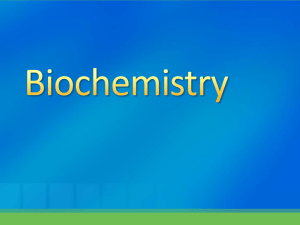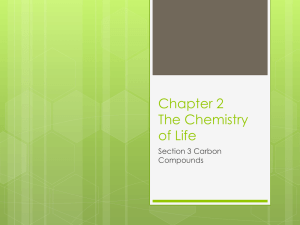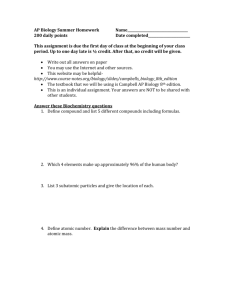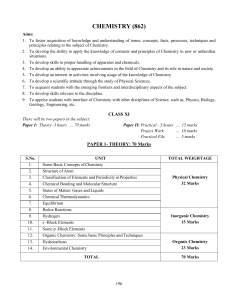CHEMISTRY 1) BASIC CONCEPTS :‐ Atomic and molecular masses, mole concept and molar mass,
advertisement
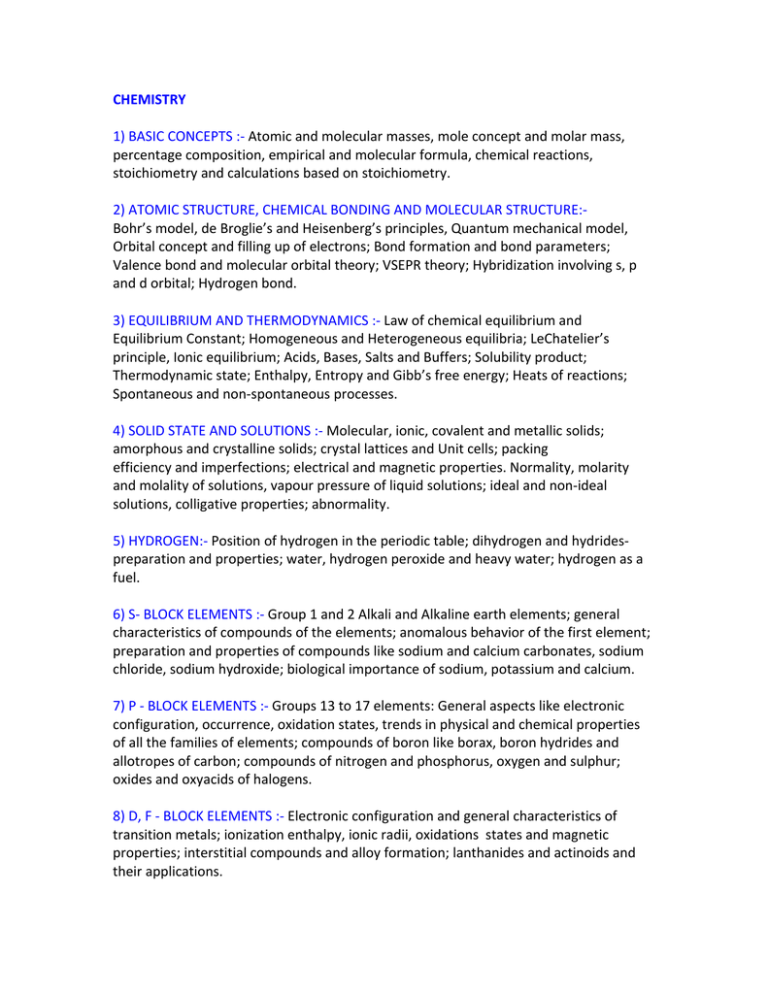
CHEMISTRY 1) BASIC CONCEPTS :‐ Atomic and molecular masses, mole concept and molar mass, percentage composition, empirical and molecular formula, chemical reactions, stoichiometry and calculations based on stoichiometry. 2) ATOMIC STRUCTURE, CHEMICAL BONDING AND MOLECULAR STRUCTURE:‐ Bohr’s model, de Broglie’s and Heisenberg’s principles, Quantum mechanical model, Orbital concept and filling up of electrons; Bond formation and bond parameters; Valence bond and molecular orbital theory; VSEPR theory; Hybridization involving s, p and d orbital; Hydrogen bond. 3) EQUILIBRIUM AND THERMODYNAMICS :‐ Law of chemical equilibrium and Equilibrium Constant; Homogeneous and Heterogeneous equilibria; LeChatelier’s principle, Ionic equilibrium; Acids, Bases, Salts and Buffers; Solubility product; Thermodynamic state; Enthalpy, Entropy and Gibb’s free energy; Heats of reactions; Spontaneous and non‐spontaneous processes. 4) SOLID STATE AND SOLUTIONS :‐ Molecular, ionic, covalent and metallic solids; amorphous and crystalline solids; crystal lattices and Unit cells; packing efficiency and imperfections; electrical and magnetic properties. Normality, molarity and molality of solutions, vapour pressure of liquid solutions; ideal and non‐ideal solutions, colligative properties; abnormality. 5) HYDROGEN:‐ Position of hydrogen in the periodic table; dihydrogen and hydrides‐ preparation and properties; water, hydrogen peroxide and heavy water; hydrogen as a fuel. 6) S‐ BLOCK ELEMENTS :‐ Group 1 and 2 Alkali and Alkaline earth elements; general characteristics of compounds of the elements; anomalous behavior of the first element; preparation and properties of compounds like sodium and calcium carbonates, sodium chloride, sodium hydroxide; biological importance of sodium, potassium and calcium. 7) P ‐ BLOCK ELEMENTS :‐ Groups 13 to 17 elements: General aspects like electronic configuration, occurrence, oxidation states, trends in physical and chemical properties of all the families of elements; compounds of boron like borax, boron hydrides and allotropes of carbon; compounds of nitrogen and phosphorus, oxygen and sulphur; oxides and oxyacids of halogens. 8) D, F ‐ BLOCK ELEMENTS :‐ Electronic configuration and general characteristics of transition metals; ionization enthalpy, ionic radii, oxidations states and magnetic properties; interstitial compounds and alloy formation; lanthanides and actinoids and their applications. 9) BASIC ORGANIC CHEMISTRY AND TECHNIQUES :‐ Tetravalence of carbon and shapes or organic compounds; electronic displacement in a covalent bond –inductive and electromeric effects, resonance and hyperconjugation; hemolytic and heterolytic cleavage of covalent bond – free radicals, carbocations, carbanions electrophiles and nucleophiles; methods of purification of organic compounds; qualitative and quantitative analysis. 10). ALCOHOLS, PHENOLS AND ETHERS :‐ IUPAC nomenclature, general methods of preparation, physical and chemical properties, identification of primary, secondary and tertiary alcohols, mechanism of dehydration; electrophillic substitution reactions. 11) ALDEHYDES, KETONES, CARBOXYLIC ACIDS AND AMINES:‐ Nomenclature, general methods of preparation, physical and chemical properties of the group members; nucleophilic addition and its mechanism; reactivity of alpha hydrogen in aldehydes; mono and dicarboxylic acids‐preparation and reactions; identification of primary, secondary and tertiary amines; preparation and reactions of diazonium salts and their importance in synthesis. 12) POLYMERS AND BIOMOLECULES :‐ Natural and synthetic polymers, methods of polymerization, copolymerization, molecular weight of polymers, Polymers of commercial importance,Carbohydrates: mono, oligo and polysaccharides; Proteins Alpha amino acid, peptide linkage and polypeptides: Enzymes, Vitamins and Nucleic acids (DNA and RNA) 13) ENVIRONMENTAL CHEMISTRY :‐ Air, water and soil pollution, chemical reactions in atmosphere, acid rain; ozone and its depletion; green house effect and global warming; pollution control. 14) CHEMISTRY IN EVERYDAY LIFE :‐ Drugs and their interaction; chemicals as analgesics, tranquilizers, antiseptics, antibiotics, antacids and antihistamines; Chemicals in food‐ preservatives, artificial sweetening agents; cleansing agents – soaps and detergents.


